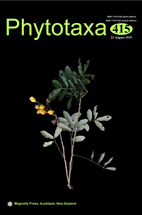Abstract
In this study, Aphanomyces brasiliensis is proposed as a new species. It was collected from soil and water samples of a trout farming system located in Atlantic Rainforest areas, São Paulo State, Brazil. This species is mainly characterized by the presence of commonly short and unbranched oogonial stalks, antheridia usually androgynous and monoclinous with clavate, bell-shaped or cylindrical antheridial cells. We also collected Aphanomyces helicoides, A. raphani and A. stellatus from samples of submerged leaves, surface sediment and water in freshwater bodies. All species were isolated growing on cellulosic and/or keratinous substrates used as bait. Phylogenetic analysis of the ITS (rDNA) region showed that the new species and the other Brazilian isolates clustered within the Aphanomyces clade.

